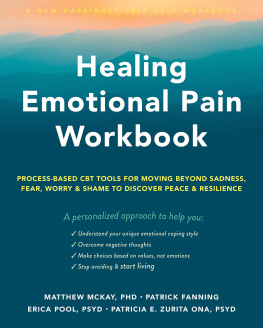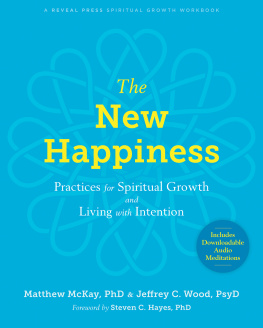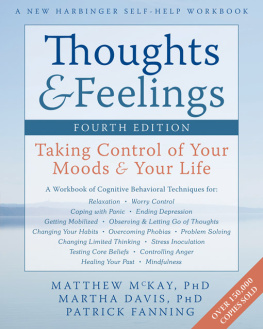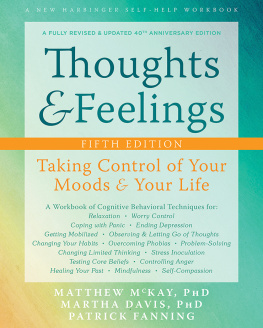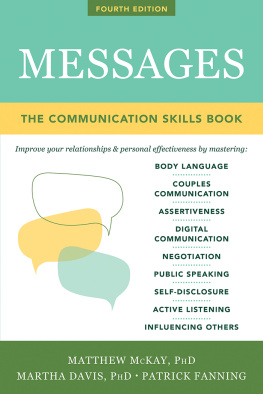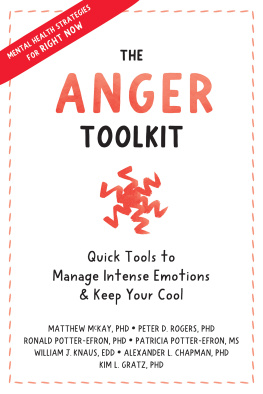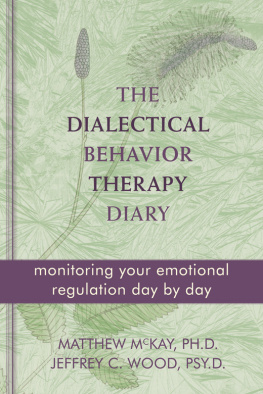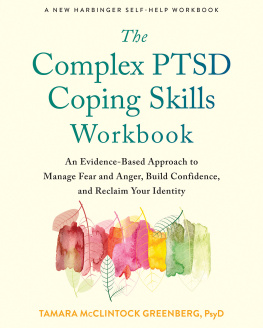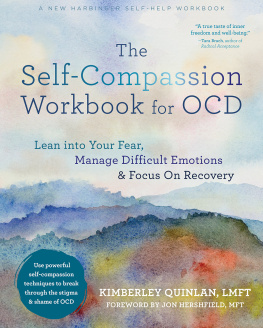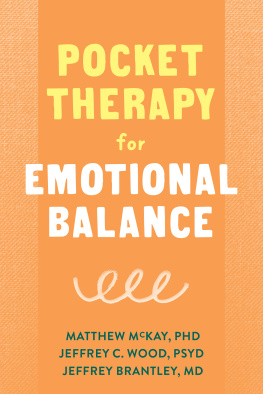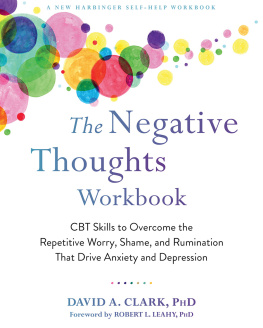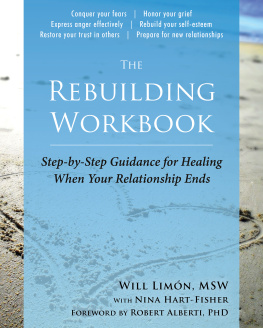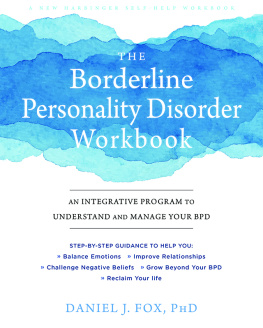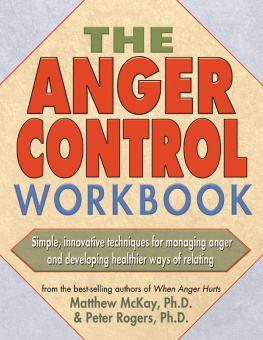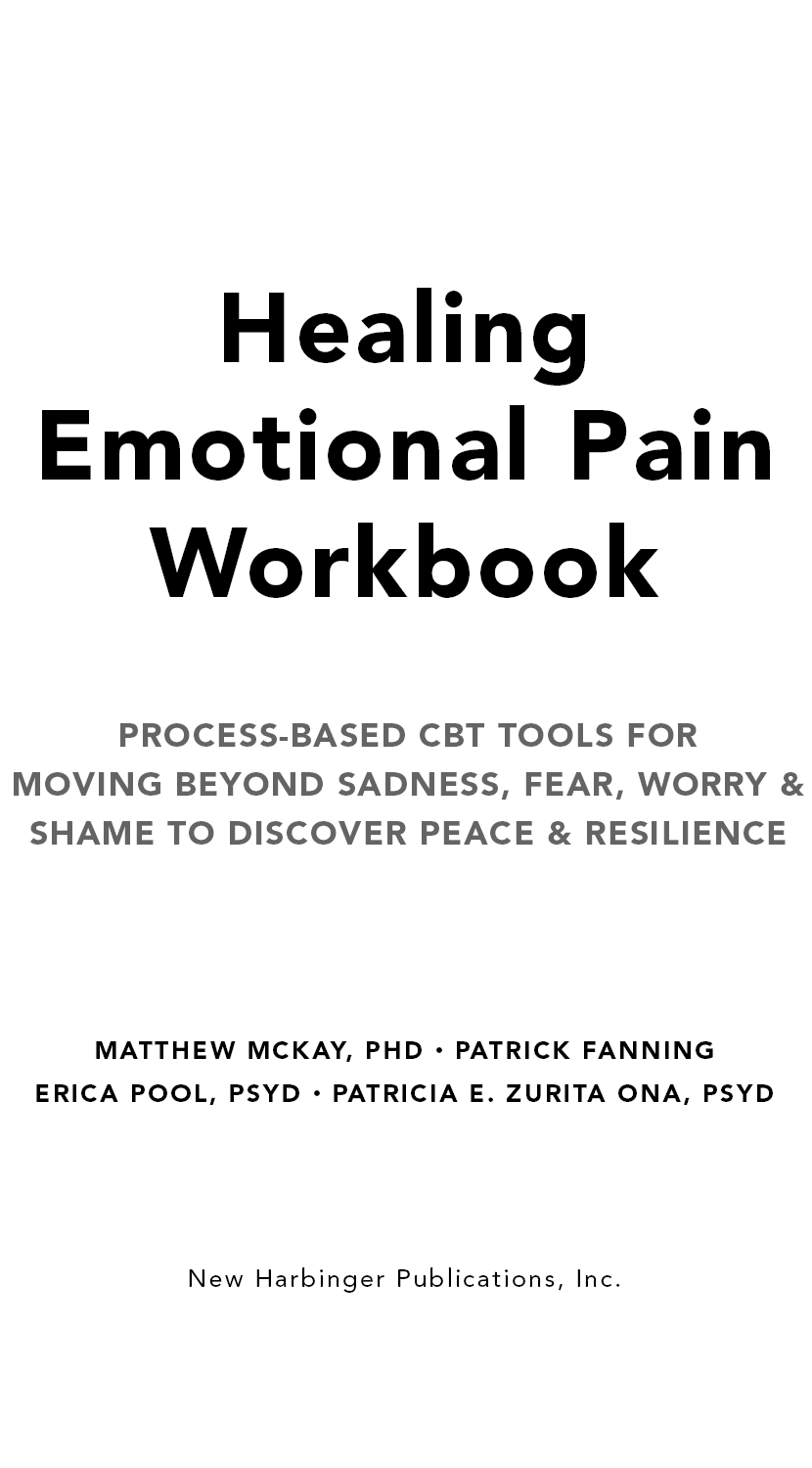Healing emotional pain is one of the deepest journeys one can make in lifeto make peace with yourself and the world. This wise and compassionate workbook points to a way.
Bob Stahl, PhD , coauthor of A Mindfulness-Based Stress Reduction Workbook , Living with Your Heart Wide Open , Calming the Rush of Panic , MBSR Every Day , and more
This book is an excellent resource for working on yourself. Im especially impressed with how the authors have combined savvy cognitive behavioral modification strategies with superb mindfulness acceptanceintegrationresolution skills for difficult emotional states. Very thorough and will be helpful for both novices and those more experienced on the psychological journey.
John Ruskan , author of Emotional Clearing and Deep Clearing
Healing Emotional Pain Workbook is an artful collaboration of four authors who have developed a highly effective, integrative approach to self-healing. Get this practical, research-based workbook. Do the revealing self-assessment and complete the comprehensive worksheets to heal the emotional pain that has been keeping you stuck.
Paul Aurand, MHt , author of Essential Healing , and award-winning master hypnotherapist who has worked in the field for more than thirty years
This book is an excellent, practical companion and support for anyone who wishes to take better control of their own lifeespecially their inner life and the often-disturbing personal experiences of emotional pain. The authors have provided a tremendous resource that is easy to access and utilize, while also revealing an achievable pathway toward necessary healing. Based in science and established research, this book is also an invitation to move beyond healing as the only goal, and to discover the beautiful possibility of a happier, more compassionate, and wiser life.
Jeffrey Brantley, MD , emeritus consulting professor in Duke University Medical Centers department of psychiatry and human behavior, and author of C alming Your Anxious Mind
Healing Emotional Pain Workbook offers an integration of skills and perspectives cultivated from the best of mindfulness-infused Western psychology. The exercises provide access to the underlying sense of wellness and agency we all carry within us, when not identified with our negative thought patterns. Highly recommended for those desiring to know the truth of who they are, free from the conditioning of maladaptive beliefs.
Kate Gustin, PhD , clinical psychologist, founder of PoZitive Strides psychoeducational services, and author of The No-Self Help Book
Survivors of abuse desperately need help when it comes to finding safer and more effective coping mechanisms. This well-written and organized workbook offers powerful strategies such as distress tolerance skills, emotion acceptance, and flexible thinking skills along with teaching important practices such as mindfulness, self-compassion, patience, serenity, and relapse prevention. I highly recommend it if you are a survivor of childhood abuse or adult emotional, physical, or sexual abuse.
Beverly Engel, LMFT , author of Healing Your Emotional Self
Healing Emotional Pain Workbook will be a go-to book for anyone looking to find their wise mind when emotional intensity, anxiety, or depression derail you from your own goals and values. With dozens of tools and self-reflection worksheets, you can learn to navigate what the authors call emotional storms. The case examples make understanding and applying these tools easy to do. This is a terrific tool kit!
Lara Honos-Webb, PhD , author of Six Super Skills for Executive Functioning and The Gift of Adult ADD
Publishers Note
This publication is designed to provide accurate and authoritative information in regard to the subject matter covered. It is sold with the understanding that the publisher is not engaged in rendering psychological, financial, legal, or other professional services. If expert assistance or counseling is needed, the services of a competent professional should be sought.
Distributed in Canada by Raincoast Books
Copyright 2022 by Matthew McKay, Patrick Fanning, Erica Pool,
and Patricia E. Zurita Ona
New Harbinger Publications, Inc.
5674 Shattuck Avenue
Oakland, CA 94609
www.newharbinger.com
Cover design by Sara Christian
Cover photo by Willian Justen de Vasconcellos on Unsplash.
Acquired by Catharine Meyers
Edited by Rona Bernstein
All Rights Reserved
Library of Congress Cataloging-in-Publication Data
Names: McKay, Matthew, author. | Fanning, Patrick, author. | Pool, Erica, author. | Zurita Ona, Patricia, author.
Title: Healing emotional pain workbook : process-based CBT tools for moving beyond sadness, fear, worry, and shame to discover peace and resilience / Matthew McKay, Patrick Fanning, Erica Pool, and Patricia E. Zurita Ona.
Description: Oakland, CA : New Harbinger Publications, Inc., [2022] | Includes bibliographical references.
Identifiers: LCCN 2021048270 | ISBN 9781648480218 (trade paperback)
Subjects: LCSH: Psychic trauma. | Psychic trauma--Treatment. | Cognitive therapy.
Classification: LCC RC552.T7 M355 2022 | DDC 616.85/2106--dc23/eng/20211116
LC record available at https://lccn.loc.gov/2021048270
Contents
Introduction
This workbook will teach you how to heal the emotional pain in your lifethe depression, anxiety, shame, fear, anger, and other painful feelings that keep you stuck and unhappy. Guided by an approach called process-based cognitive behavioral therapy, you will learn how to
- identify and understand your unique emotional coping stylethe mechanisms that create enduring emotional pain; and
- harness change processes that will enable you to
- reduce the intensity and frequency of painful feelings,
- overcome the effects of negative thoughts,
- make choices based on your values rather than emotions, and
- stop avoiding life and start living.
Negative Coping Mechanisms
Everyone learns ways to cope with stress and emotional pain. Some of them help; some of them have the long-term effect of worsening your emotional pain. These are called transdiagnostic coping mechanisms. They create the enduring emotional pain that you experience as persistent anger, shame, or emotion dysregulation or that gets diagnosed as specific disorders such as anxiety, depression, or posttraumatic stress disorder (PTSD).
Researchers have studied transdiagnostic coping mechanisms as a cause of chronic emotional pain for almost two decades (Barlow, Allen, and Choate 2004; Frank and Davidson 2014; Harvey, Watkins, and Mansell 2004; McKay, Zurita Ona, and Fanning 2012; Nolen-Hoeksema and Watkins 2011) and have identified eleven mechanisms most responsible for emotional disorders. These negative coping mechanisms are:
- behavioral avoidance
- safety seeking
- emotion-driven behavior
- distress intolerance
- emotion avoidance
- thought avoidance
- cognitive misappraisals
- self-blame (internalizing)
- blaming others (externalizing)
- worry
- rumination
Following this introduction, youll complete an assessment to identify which negative coping mechanisms you frequently use and begin to learn how they affect you emotionally. Almost no one uses all eleven coping mechanisms; most people tend to use particular mechanisms while making little use of others. When you understand which mechanisms you use to cope with stress and emotional pain, youll get a glimpse of what needs to change and how you can begin healing your emotional distress.

